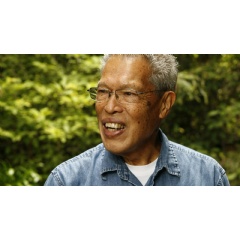TNC Receives Gift of Land on Hawai’i Island
135-acre South Kona Parcel Donated by the late Charman Akina
The late Hawaiian physician Charman J. Akina has donated 135 acres of land in South Kona to The Nature Conservancy.
Located just below the Conservancy’s 8,081-acre Kona Hema Preserve and the State’s South Kona Forest Reserve, the new parcel provides habitat for rare native wildlife and plants. Akina made the donation in late December of last year, a couple of weeks before his passing in early January.
“The Nature Conservancy of Hawai‘i has been fortunate to work with wonderful supporters like Dr. Akina, who understood the vast majority of Hawai‘i’s native species are found nowhere else in the world,” said TNC Hawaiʽi Executive Director Ulalia Woodside. “This gift will provide a home and refuge for native plants and animals for future generations.”
The land is the second of two properties Akina gave to TNC. He donated a 37-acre neighboring parcel in 2014. He first became interested in the two South Kona parcels in the early 1970s when the land was being sub-divided for sale.
“I went down there and found these properties that had beautiful trees on them along with young forest,” he said. “When I found out they would be sold for development, I stepped in and bought them. I wanted to save them from the bulldozer.”
After TNC acquired 4,000 acres next door at Honomalino in 1999—the first of three adjoining parcels that make up its Kona Hema Preserve—Akina decided that one day he would donate the land to TNC.
The 135-acre parcel is a section of the 1926 Ho‘opuloa lava flow. Along the flow edges, it contains native plants such as māmane, ‘iliahi, pāwale and ferns. The rare mēhamehame tree (Flueggea neowawraea) was historically found on the parcel, which is also in the very limited habitat range for the tallest species of Hawaiian fan palm, or loulu (Pritchardia schattaueri). Both were likely found on the parcel prior to the 1926 lava flow. Surveys have also located native lacewings and Kamehameha butterflies on the property.
Native songbird species such as the ʻapapane, ʻiʻiwi, ʻelepaio, and ʻamakihi are found throughout this area as they pass through the protected corridor of South Kona properties. The area also provides much needed habitat for the endangered ‘io (Hawaiian hawk) and the ‘ōpe‘ape‘a (Hawaiian hoary bat), which likely utilizes the property for foraging. The National Audubon Society rates Kona forests as a A-1 Globally Significant Important Bird Area.
Akina, 85, was a graduate of Punahou School and Stanford University. He worked for more than 30 years at the Honolulu Medical Group, specializing in internal medicine, before serving the native Hawaiian community for 12 years at the Waimanalo Health Center. Prior to his death, he divided his time between homes in Honolulu and the Hilo area of the Big Island.
“Dr. Akina was a generous and humble man,” said Woodside. “He will be sorely missed.”
The Nature Conservancy is a global conservation organization dedicated to conserving the lands and waters on which all life depends. Guided by science, we create innovative, on-the-ground solutions to our world’s toughest challenges so that nature and people can thrive together. We are tackling climate change, conserving lands, waters and oceans at an unprecedented scale, providing food and water sustainably and helping make cities more sustainable. Working in 72 countries, we use a collaborative approach that engages local communities, governments, the private sector, and other partners. To learn more, visit www.nature.org or follow @nature_press on Twitter.
( Press Release Image: https://photos.webwire.com/prmedia/5/236710/236710-1.jpg )
WebWireID236710
This news content was configured by WebWire editorial staff. Linking is permitted.
News Release Distribution and Press Release Distribution Services Provided by WebWire.
